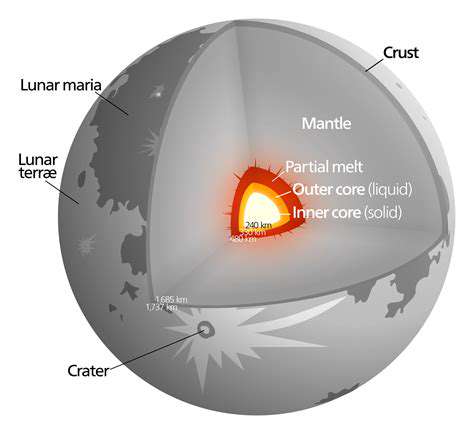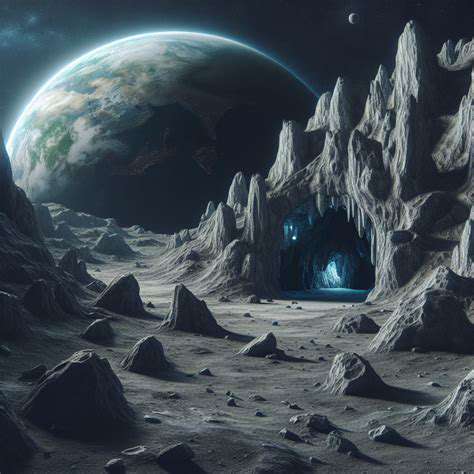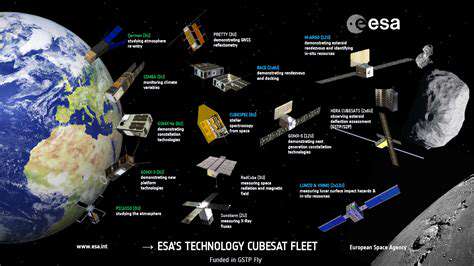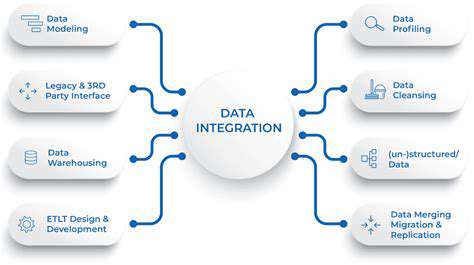Impact Craters: Scars of Cosmic Collisions
Lunar impact craters, ranging in size from microscopic pits to vast basins, are a testament to the relentless bombardment the Moon has endured throughout its history. These craters are not simply holes in the surface; they provide invaluable insights into the Moon's geological evolution and the bombardment history of the inner solar system. The varying sizes and shapes of craters reflect the size and velocity of the impacting objects, offering clues about the composition and trajectory of these celestial projectiles. Analyzing the ejecta blankets surrounding craters further reveals the nature of the underlying lunar materials and the forces involved in the impact event.
The sheer abundance of craters on the Moon, particularly in comparison to other terrestrial bodies, suggests a period of intense early bombardment. Studying these craters helps scientists understand the timing and intensity of this epoch, offering a broader context for the formation and evolution of the inner solar system. Moreover, the study of crater morphology, including the presence of central peaks and terraced walls, provides data on the strength and rigidity of the lunar crust.
Volcanic Features: Evidence of a Molten Past
Lunar volcanism, although largely extinct today, played a significant role in shaping the Moon's surface. Vast lava plains, known as maria, are the most prominent examples of volcanic activity, covering significant portions of the lunar surface. These dark, basaltic plains are composed of solidified lava flows that erupted from deep within the Moon. The composition of these lava flows provides insights into the composition of the lunar mantle and the processes that drove the volcanic activity.
Lunar volcanic features extend beyond the maria. Smaller, but no less significant, volcanic structures, such as domes and cones, are also present on the Moon, offering clues about the diversity of volcanic processes that occurred throughout lunar history. The study of volcanic features allows us to understand the timing and distribution of these events, further refining our understanding of the Moon's internal evolution.
Lunar Highlands: Ancient Crustal Scars
The lunar highlands, the lighter-colored regions of the Moon, represent the oldest exposed lunar crust. These areas are heavily cratered, reflecting their prolonged exposure to cosmic bombardment throughout the early history of the Moon. The composition of the highlands differs from the maria, providing insights into the early differentiation processes and the evolution of the lunar crust.
The study of the lunar highlands offers a window into the Moon's early thermal history and the evolution of its crustal structure. The presence of specific minerals and rock types within the highlands provides further evidence of the Moon's geological history, helping to constrain models of its formation and evolution.
Regolith: A Layer of Lunar Dust
The regolith, a layer of loose, fragmented material covering the lunar surface, is a product of billions of years of impacts. This layer is composed of pulverized rock and dust, formed from the continuous bombardment of the lunar surface. The regolith plays a crucial role in the thermal and radiation environment of the Moon, shielding the underlying surface from extreme temperature variations and cosmic radiation.
The regolith's properties, such as its thickness and composition, vary across the lunar surface, reflecting the differing impact histories of different regions. Understanding the regolith is critical for future lunar missions, as it impacts the design of landing systems, resource utilization, and the overall sustainability of lunar exploration.
Lunar Maria: Basalt Plains of Volcanic Origin
The dark, smooth plains known as maria are among the most striking features on the lunar surface. These vast, basaltic plains are primarily composed of solidified lava flows, marking periods of extensive volcanic activity. Their relatively smooth surfaces, compared to the heavily cratered highlands, suggest a later period of formation.
Detailed analysis of the maria, including their chemical composition and age, provides valuable data on the timing and intensity of lunar volcanism. These data help us understand the evolution of the Moon's interior and the processes that led to the formation of these distinctive features. Studying the maria is crucial for understanding the lunar thermal history and the long-term evolution of volcanic activity.
Lunar Poles: Potential Resource Reservoirs
The lunar poles, particularly the permanently shadowed craters, are of significant interest due to the potential presence of water ice. This ice, if confirmed, could serve as a valuable resource for future lunar explorers, providing both drinking water and a source of rocket fuel. The presence of water ice in these regions raises exciting possibilities for long-term lunar settlements and exploration.
Understanding the distribution and extent of water ice at the lunar poles is crucial for future lunar missions and potential human settlements. Further research into the composition and characteristics of the lunar regolith and subsurface materials in these regions is necessary to assess the feasibility of utilizing these resources.
Lunar Composition and Material Properties
Lunar Surface Composition
The lunar surface is primarily composed of various minerals, including plagioclase feldspar, pyroxene, and olivine. These minerals are derived from the lunar mantle and crust, and their distribution and abundance vary across the different lunar regions. Understanding the precise composition of these minerals is crucial for comprehending the Moon's formation and evolution, providing insights into the early solar system's conditions and processes. Analysis of these materials reveals clues about the Moon's geological history and its relationship to other bodies in the inner solar system.
Impact Cratering and its Effects
The lunar surface is heavily cratered, a testament to the Moon's exposure to countless impacts throughout its history. These impacts have significantly altered the surface topography and composition, creating diverse geological features like basins and mountains. Studying the distribution and morphology of these craters provides valuable insights into the impact history of the Moon, as well as the history of the inner solar system. The resulting ejecta blankets and the layered structures within the craters themselves offer a record of past impact events and the material properties of the impacting bodies.
Regolith: A Layer of Dust
The lunar regolith, a layer of loose, fragmented material covering the lunar surface, is a significant component of lunar composition. This layer is primarily composed of pulverized rock and dust, originating from the continuous bombardment of meteoroids and micrometeoroids. The regolith's thickness varies across the lunar surface and plays a critical role in understanding the Moon's history of bombardment, as well as surface processes such as dust retention and transport. It also poses challenges for future lunar exploration and resource utilization.
Volcanic Activity and Lunar Maria
Evidence of past volcanic activity is evident in the lunar maria, vast, dark plains that cover significant portions of the lunar surface. These maria are composed of basaltic lava flows, which were erupted from the lunar interior during the Moon's geologic past. Analysis of the chemical composition of these basalts helps researchers understand the Moon's internal structure and the processes that led to its volcanic activity. Dating these flows provides important constraints on the timescale of lunar volcanic activity and the thermal evolution of the Moon.
Thermal Properties and Temperature Variations
The lunar surface experiences extreme temperature variations due to its lack of atmosphere. Understanding these thermal properties is critical for designing and operating future lunar missions. The temperature fluctuations affect the behavior of materials, impacting the design of habitats, rover operations, and the deployment of solar arrays. Extreme temperature variations also influence the physical and chemical processes that shape the lunar surface, such as the thermal fracturing of rocks and the sublimation of volatile materials.
Mechanical Properties and Strength
The mechanical properties of lunar materials, such as strength, hardness, and tensile strength, are essential for planning and executing lunar operations. These properties influence the stability of structures, the mobility of equipment, and the potential for hazards during excavation and construction. Understanding the mechanical properties of lunar rocks and regolith is vital for developing strategies for resource utilization, constructing shelters, and supporting the potential for future lunar settlements.
Radiation Environment and its Impact
The Moon's exposure to solar and cosmic radiation poses a significant challenge for future lunar explorers and equipment. Understanding the radiation environment and its potential effects on materials, human health, and technological systems is crucial for mission planning and protection. The long-term effects of radiation exposure must be considered when evaluating the habitability of the lunar surface and the feasibility of long-duration missions. Protecting astronauts and equipment from radiation is a key concern in planning future lunar missions.
Exploring the Lunar Interior: Clues from Seismology

Understanding Lunar Composition
The Moon's composition is a crucial factor in understanding its interior structure and evolution. It's primarily composed of silicate rocks, similar to Earth's mantle, but with a significantly different isotopic signature. This difference in isotopic makeup suggests a unique formation history, potentially involving different materials and processes compared to Earth's formation. This understanding is vital to deciphering the Moon's interior.
Further analysis of lunar samples reveals the presence of various minerals and elements. These insights help in establishing a baseline for understanding the Moon's overall composition and its potential connections to other celestial bodies.
Investigating the Crustal Layer
The lunar crust, the outermost layer, is significantly thicker in some regions compared to others. This variation in thickness plays a key role in understanding the Moon's geological history and the impact events that have shaped it over time. Studying the composition and structure of the crust provides valuable clues about the processes that formed the Moon and its subsequent evolution.
Exploring the Mantle's Structure
The lunar mantle, beneath the crust, is a layer of partially molten or solid silicate rock. Understanding its precise composition and state is essential for comprehending the Moon's thermal history and the processes that have influenced its internal structure. The mantle's properties, such as its viscosity and temperature gradients, are vital factors in determining its behavior and its role in the Moon's overall evolution.
Research into the mantle's structure often involves seismic data analysis, which provides indirect insights into its properties and characteristics.
Analyzing the Core's Size and Composition
The lunar core, the innermost layer, is significantly smaller compared to Earth's core. This difference in size and composition provides insight into the Moon's formation and its subsequent evolution. This smaller core could be a result of different formation processes compared to Earth. The presence or absence of a molten outer core is a significant factor in determining the Moon's magnetic field and its internal heat flow.
Examining the Impact History
The lunar surface bears clear evidence of numerous impact events throughout its history. These impacts have significantly shaped the lunar landscape, including the formation of craters and basins. Analysis of these impact features is crucial for reconstructing the Moon's geological history. Understanding the frequency and intensity of these impacts helps us determine the environment in which the Moon formed and evolved.
Understanding the Role of Heat Flow
The Moon, though lacking a significant global magnetic field, does have internal heat flow. This heat flow, driven by radioactive decay and residual heat from its formation, plays a crucial role in the Moon's evolution. Understanding the distribution and intensity of this heat flow is essential for comprehending the Moon's thermal history and the evolution of its interior structures over time. This heat flow profoundly influences the Moon's geological processes and helps us understand its internal dynamics.
Significance of Lunar Interior Studies
Studying the lunar interior offers valuable insights into the formation and evolution of the inner solar system. By comparing the Moon's structure to other terrestrial bodies, we gain a deeper understanding of planetary formation processes and the role of impacts in shaping planetary bodies. These studies have implications for comprehending the formation of the Earth's Moon and other satellites in our solar system.
Further investigations into the lunar interior are critical for refining our understanding of planetary evolution and the conditions that prevailed during the early stages of our solar system.
Future Lunar Exploration and Scientific Discoveries

Lunar Resource Utilization: A Foundation for Future Missions
Extracting valuable resources from the Moon, such as water ice and regolith, is crucial for future lunar exploration. These resources can be used to create life support systems, rocket fuel, and construction materials, drastically reducing the need for Earth-based supplies and making long-term missions more sustainable. This self-sufficiency will allow for more ambitious projects and extended stays on the lunar surface, paving the way for lunar outposts and even a permanent human presence.
The presence of water ice in permanently shadowed craters, offers a potential source of both drinking water and rocket propellant. Furthermore, lunar regolith, the powdery surface material, contains valuable minerals that could be processed into building materials, further enhancing the economic viability of lunar operations.
Advanced Lunar Habitats and Infrastructure
Designing and constructing advanced lunar habitats capable of supporting extended stays will be a significant challenge. These structures must be resilient to the harsh lunar environment, including extreme temperature fluctuations, radiation, and micrometeoroid impacts. Developing innovative architectural designs and construction techniques, using lunar resources whenever possible, will be paramount.
Infrastructure development will also be vital, including power generation systems, communication networks, and transportation systems to facilitate the movement of personnel and supplies throughout the lunar surface. These systems must be designed to be robust and reliable, ensuring the long-term viability of any lunar settlement.
Scientific Discoveries and Research Opportunities
The Moon offers a unique environment for scientific research, providing insights into the Earth-Moon system, the early solar system, and planetary science in general. Studying lunar samples can yield valuable data about the formation and evolution of the Moon, providing crucial information for understanding the history of our solar system.
Furthermore, lunar research facilities can house sophisticated instruments to conduct experiments in areas such as astrophysics, materials science, and radiation shielding. These experiments can address fundamental scientific questions and contribute to technological advancements with applications beyond the lunar environment.
International Collaboration and Partnerships
Future lunar exploration will undoubtedly require international collaboration and partnerships. Sharing expertise, resources, and technological advancements will be essential for achieving ambitious goals. This cooperation will foster knowledge exchange and create opportunities for scientific breakthroughs.
Joint ventures can accelerate the development of lunar technologies, ensuring that the resources and expertise of different nations are combined to address the complexities of lunar exploration.
Economic Opportunities and Sustainability
The establishment of lunar outposts and settlements could potentially unlock new economic opportunities, including the extraction and processing of lunar resources for commercial purposes. This could generate revenue streams that fund further exploration and development. These commercial ventures could also lead to the creation of new industries and jobs related to lunar operations.
However, the development of lunar economies must be approached with careful consideration of environmental sustainability. Implementing responsible resource management practices and minimizing the impact on the lunar environment will be critical for ensuring the long-term viability of these operations.
Ethical Considerations and Public Engagement
As humanity ventures further into space, ethical considerations regarding the use and exploitation of lunar resources must be addressed. Establishing clear guidelines and regulations for lunar activities is vital to prevent conflicts and ensure responsible stewardship of this celestial body.
Public engagement and education are crucial to foster understanding and support for lunar exploration. Communicating the scientific, technological, and economic benefits of lunar missions to the public will be essential for maintaining public interest and ensuring continued support for future endeavors.










